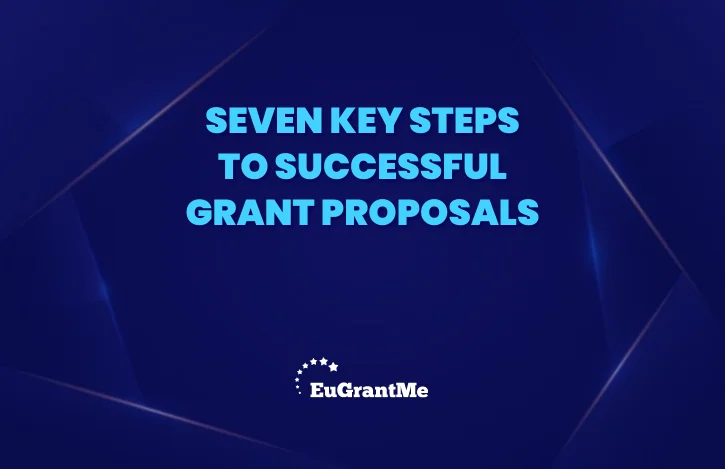Crafting successful grant proposals is essential for securing funding to support your projects and initiatives. Whether you are a non-profit organisation, a research institution, or a small business, mastering the art of proposal writing is crucial for accessing grants and achieving your goals. By following these seven key steps, you can increase your chances of creating compelling proposals that attract funding and support.
-
Define Clear Objectives and Goals
The first step in creating a successful grant proposal is to define clear objectives and goals for your project. Clearly articulating what you aim to achieve and how you plan to do it sets the foundation for your proposal. Your objectives should be specific, measurable, achievable, relevant, and time-bound (SMART). By clearly outlining your goals, you demonstrate to funders that you have a clear vision for your project and a plan for achieving it.
-
Research Funding Opportunities
Before you start writing your proposal, it’s essential to research funding opportunities that align with your project’s objectives and goals. Look for grants from government agencies, foundations, corporations, and other funding sources that support projects in your field or area of interest. Consider factors such as eligibility criteria, funding priorities, and application deadlines when identifying potential funding opportunities. Researching funding opportunities thoroughly ensures that you target grants that are the best fit for your project.
-
Tailor Your Proposal to the Funder’s Priorities
Once you’ve identified potential funding opportunities, tailor your proposal to align with the funder’s priorities and preferences. Carefully review the funder’s guidelines and requirements to understand what they are looking for in proposals. Highlight how your project addresses the funder’s goals and objectives and demonstrates alignment with their mission and values. By customising your proposal to meet the funder’s criteria, you increase your chances of success and demonstrate your commitment to their priorities.
-
Develop a Compelling Narrative
Crafting a compelling narrative is essential for capturing the funder’s attention and persuading them to support your project. Tell a compelling story that illustrates the importance and impact of your project. Use clear, concise language and avoid jargon or technical terms that may be unfamiliar to the funder. Clearly communicate the problem or need your project addresses, the solution you propose, and the potential outcomes and benefits. Engaging the funder’s emotions and appealing to their values can help make your proposal more persuasive.
-
Provide Clear and Detailed Budget Information
Funders want to know how their money will be used and what impact it will have. Provide clear and detailed budget information that outlines the costs associated with your project. Break down expenses into categories such as personnel, equipment, supplies, and overhead costs. Clearly justify each expense and explain how it contributes to the success of your project. Transparency and accuracy in budgeting demonstrate your financial management skills and build trust with the funder.
-
Demonstrate Capacity and Capability
Funders want to support projects that have the capacity and capability to succeed. Demonstrate your organisation’s expertise, experience, and track record in your field or area of work. Highlight past successes, relevant accomplishments, and partnerships or collaborations that demonstrate your ability to deliver results. Provide evidence of your organisation’s capacity to manage the proposed project effectively, including staff qualifications, infrastructure, and support systems. By demonstrating your capacity and capability, you reassure funders that their investment will yield positive outcomes.
-
Review and Revise
Before submitting your proposal, take the time to review and revise it carefully. Check for spelling and grammatical errors, consistency in formatting and style, and clarity in language and presentation. Review the proposal against the funder’s guidelines and requirements to ensure that you have addressed all necessary elements. Consider seeking feedback from colleagues, mentors, or other stakeholders to get fresh perspectives and identify areas for improvement. Revision is an essential part of the proposal writing process and can significantly impact its quality and effectiveness.
Crafting successful grant proposals requires careful planning, research, and attention to detail. By following these seven key steps – defining clear objectives and goals, researching funding opportunities, tailoring your proposal to the funder’s priorities, developing a compelling narrative, providing clear and detailed budget information, demonstrating capacity and capability, and reviewing and revising – you can increase your chances of securing funding for your projects. Mastering the art of proposal writing is essential for accessing grants and resources that support your organisation’s mission and goals.
At EuGrantMe, we are passionate about fostering innovation and empowering ambitious minds to flourish. Our mission revolves around providing top-notch grant writing services for the EIC Accelerator and Horizon grants in Europe, enabling our customers to unlock the full potential of their ground-breaking ideas.
Do you have a project to turn into reality?
Contact us!


